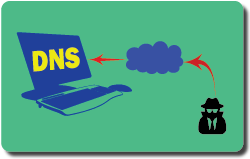Remote DNS Attack Lab
SEED Lab: A Hands-on Lab for Security Education
Overview

The objective of this lab is for students to gain the first-hand experience on the remote DNS cache poisoning attack, also called the Kaminsky DNS attack. DNS (Domain Name System) is the Internet's phone book; it translates hostnames to IP addresses and vice versa. This translation is through DNS resolution, which happens behind the scene. DNS Pharming attacks manipulate this resolution process in various ways, with an intent to misdirect users to alternative destinations, which are often malicious. This lab focuses on a particular DNS Pharming attack technique, called DNS Cache Poisoning attack.
In another SEED Lab, we have designed activities to conduct the same attack in a local network environment, i.e., the attacker and the victim DNS server are on the same network, where packet sniffering is possible. In this remote attack lab, packet sniffering is not possible, so the attack becomes much more challenging than the local attack.
Lab Tasks
- Update Notice: This lab description was newly updated on . If this update happened in the middle of your assignment, you can always get the old version from . The old version will phase out soon.
- VM version: This lab has been tested on our pre-built SEEDUbuntu16.04 VM.
Recommended Time
- Supervised situation (e.g. a closely-guided lab session):
- Unsupervised situation (e.g. take-home project):
Videos (New)
- This topic is covered in my Udemy course: Internet Security: A Hands-on Approach.
- If you are in Mainland China, you can access the same course from the NetEase platform.
Files that are Needed
- Zone Files for DNS Setup
- Zone file for domain example.com: example.com.zone
- Zone file for domain attacker32.com: attacker32.com.zone
- Note: If you choose different IP addresses or domain names, you need to modify the above configuration and zone files accordingly.
- The skeleton C code attack.c
Suggested Reading
- SEED Book by Wenliang Du
(Book website)
(Chinese version)
- D. Schneider. Fresh Phish: How a recently discovered flaw in the Internet's Domain Name System makes it easy for scammers to lure you to fake Web sites. IEEE Spectrum, 2008.
- The Pharming Guide: Understanding & Preventing DNS-related Attacks by Phishers.